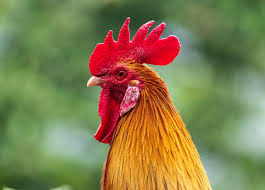Tilmicosin
Brand Name:
Tilmicosin
Indications & Uses:
Bacterial infections, Septicemia
Dosage Forms:
Water Soluble Powder, Injection Solution
Name:
Tilmicosin
Common Capacity:
- Water Soluble Powder:
- 10% concentration in 100g, 500g, 1000g per bag .
- 10%; 20% concentration in 1KG, 5KG, 10KG per bag .
- Injection Solution: 10%; 25% concentration in 500ml; 1000ml per bottle .
Applicable Animals:
Global Livestock Application:
- Poultry: Chickens, turkeys, ducks (especially for respiratory diseases).
- Swine (Pigs): Piglets, growing pigs, breeding pigs (for respiratory and other bacterial infections).
- Cattle: Calves, adult cattle (primarily for Bovine Respiratory Disease).
- Sheep & Goats: Lambs, adult sheep/goats (for respiratory infections).
Usage and Dosage:
Tilmicosin is an antibiotic primarily used for respiratory diseases in livestock and poultry. Dosage varies based on the formulation, animal species, and severity of the infection. Always consult a veterinarian for precise dosage recommendations.
General Guidelines:
- For Water Soluble Powder (via drinking water):
- Poultry (Chickens, Turkeys): Typically 15-20 mg/kg body weight per day in drinking water for 3-5 days.
- Pigs: Typically 15-20 mg/kg body weight per day in drinking water for 5 days. Or 200-400 mg per liter of drinking water for 5 days.
- For Injection Solution (Subcutaneous):
- Cattle: Typically 10 mg/kg body weight administered as a single subcutaneous injection.
- Sheep: Typically 10 mg/kg body weight, administered as a single subcutaneous injection.
- Pigs: Typically 10-20 mg/kg body weight, administered intramuscularly.
- Growth Stages:
- Young/Growing Animals: Dosing is often body weight dependent.
- Adult Animals: Standard therapeutic doses applied.
- Breeding Animals: Use with caution, especially in breeding boars and dairy cows due to potential adverse effects and withdrawal periods.
Applicable Diseases and Symptoms:
Tilmicosin is a macrolide antibiotic with a broad spectrum of activity against Gram-positive and some Gram-negative microorganisms, particularly those causing respiratory diseases. It is primarily used for:
- Respiratory Diseases:
- Cattle: Bovine Respiratory Disease (BRD) associated with Mannheimia haemolytica and Pasteurella multocida.
- Pigs: Porcine Respiratory Disease Complex (PRDC) including pleuropneumonia caused by Actinobacillus pleuropneumoniae, mycoplasmal pneumonia (Mycoplasma hyopneumoniae), and other respiratory infections caused by susceptible Pasteurella multocida.
- Poultry: Mycoplasmosis (Mycoplasma gallisepticum, Mycoplasma synoviae), infectious coryza, fowl cholera, and other respiratory infections.
- Other bacterial infections: When caused by susceptible organisms.
Precautions:
- Route of Administration: Tilmicosin is for veterinary use only. Fatal to humans if injected. Do not administer intravenously to any animal as it can be fatal to cattle, goats, horses and swine. Administer subcutaneously in cattle and sheep, and intramuscularly in pigs.
- Cardiotoxicity: Tilmicosin has dose-dependent cardiotoxic effects in some species, particularly horses and primates, and can also be cardiotoxic in pigs, leading to death.
- Withdrawal Period: Strict adherence to withdrawal periods for meat and milk is essential to prevent drug residues in human food. Withdrawal periods differ significantly based on species, dose, and administration route. Always verify specific product labels.
- Resistance: Use judiciously to minimize the development of antibiotic resistance.
- Drug Interactions: Avoid concurrent use with other macrolides or lincosamides.
- Injection Site Reactions: Swelling and inflammation at the injection site may occur.
- Storage: Store in a cool, dark place, protected from light. Keep out of reach of children.
- Human Safety: Avoid accidental self-injection. In case of accidental self-injection, seek immediate medical advice and show the package leaflet to the physician.
Contraindications:
- Horses and Donkeys: Absolutely contraindicated due to severe cardiotoxicity.
- Lactating Dairy Animals: Not recommended for use in lactating dairy animals producing milk for human consumption due to milk residue concerns.
- Laying Hens: Not recommended for use in laying hens producing eggs for human consumption.
- Breeding Boars: Not recommended for use in breeding boars as it may impair reproductive performance.
- Hypersensitivity: Do not use in animals with a known hypersensitivity to tilmicosin or other macrolides.
- Intravenous Administration: Absolutely contraindicated for intravenous administration in any species.
Post-Treatment Care:
- Monitor Clinical Response: Continuously observe treated animals for signs of clinical improvement or any adverse reactions. If the condition worsens or no improvement is seen, consult a veterinarian and reassess the diagnosis and treatment plan.
- Complete Course: Ensure that the full prescribed course of treatment is completed to prevent relapse and minimize the development of antibiotic resistance.
- Supportive Care: Provide appropriate supportive care, including sufficient access to fresh water and palatable feed, and maintaining a clean and comfortable environment.
- Biosecurity and Management: Implement or reinforce biosecurity measures and good management practices to prevent re-infection and control disease spread.
- Withdrawal Period Compliance: Strictly adhere to the established withdrawal periods before the animal’s products (meat, milk) are used for human consumption.
- Record Keeping: Maintain accurate records of all treatments, including drug name, dosage, date, route of administration, and animal identification.
Applicable Animals
Animal species suitable for this veterinary medication



